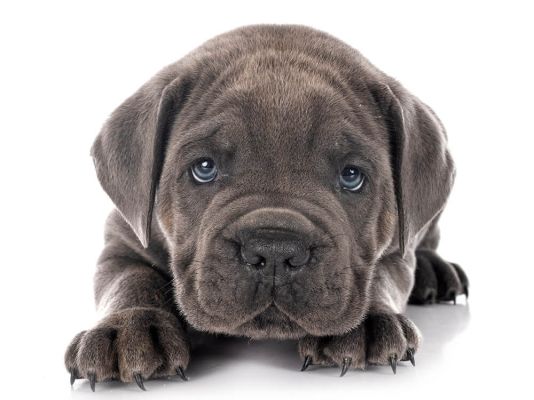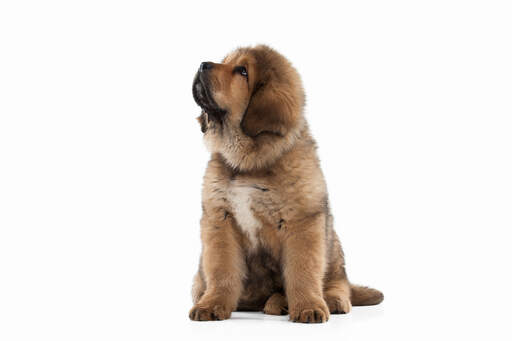Mastiffs are a powerful and powerful breed. However, they are not the most powerful breed of dog. In fact, there are numerous breeds that are stronger than Mastiffs in terms of raw athletic strength and physical strength. The power of a dog's strength is determined by a number of factors which include their weight, size, and muscle build. While Mastiffs are definitely big and strong dogs, there are other breeds that are bigger and more strong. Due to their powerful build and large dimensions, the Great Dane has been deemed one of the strongest breeds of dog. Pit Bulls, Rottweilers and Siberian Huskys are just some of the breeds known to be athletic and strong. It's also worth noting that strength is just one element of a dog's overall temperament and personality. A powerful, strong dog can look impressive. However, responsible dog ownership is more than just physical strength. No matter the size or strength of their dog, a well-trained, well socialized dog with a peaceful and even temperament is an excellent pet for the family and pet. View the recommended best mastiff breeds home page for site info.

What Are The Most Important Reasons Mastiffs Are Affixed To?
The age range of a Mastiff who is placed for adoption may differ according to a variety of aspects, such as the reason for surrender, the number of dogs that are adoptable in the region and the particular rescue or shelter that is involved. In certain situations, Mastiffs could be surrendered either as young adults or pups, while in others they could be surrendered during their old age. Breed-specific rescues might have specific conditions for the dogs they will accept. It's not uncommon to find Mastiffs at any age available to be adopted. Mastiffs might be put for adoption due to a number of reasons. One of the main reasons that Mastiffs adopt is because of health concerns. Mastiffs may be susceptible to many health problems that can result in costly medical costs. Certain owners might not be able to afford the cost of treatment, so they may opt to surrender their pet.
Behavioral issues- Mastiffs can be large dogs that can be difficult to train. Owners may lack the skills or resources to effectively train their dogs, which could lead to behavioral issues like aggression and destructive behavior.
Lifestyle Changes - Mastiffs are extremely demanding as they are large and energetic. They require a lot of space and attention. People who have significant life changes such as a move, a new job, or a new baby may find it challenging to care for their Mastiff , and could need to give them up for adoption.
Financial issues- It's possible for owners to face financial difficulties, making it difficult to take care of and train their Mastiff. This could be due to unemployment unexpected expenses, other financial hardships.
Time limitations - Mastiffs require plenty of exercise and affection Some owners might not be able or able to give their dog the attention they require.
It is important to remember that surrendering a dog must always be considered a last resort and pet owners must consider every option prior to making a choice. Read the top best mastiff breeds great advice for site recommendations.

How Long And How Often Do You Need To Train Your Korean Mastiff?
Dosa mastiffs, also known as Korean Mastiffs, are large and powerful breeds that require regular exercise. They are active and fun, so they have to keep active. Walking, jogging or playing tug-ofwar with your dog are a few activities which provide stimulation and exercise.
It's crucial to know that Korean Mastiffs can be susceptible to joint problems like hip dysplasia therefore high-impact sports like jumping must be avoided. Korean Mastiffs enjoy swimming, which is low impact and provides a full body exercise that does not put too much strain on their joints.
It is crucial to consult your veterinarian about the most effective exercise regimen for your Korean Mastiff based on their specific needs. See the top Korean Mastiff Dosa Mastiff for more tips.

What Are More Common Health Issues For An American Mastiff And How Often Should You Screen?
American Mastiffs like all breeds are vulnerable to certain health issues. Here are some of the more common health issues to be aware of- Hip and elbow dysplasia- This is a genetic condition in which the elbow or hip joint doesn't develop as it should. In the most severe cases, it could cause pain and lameness. Surgery might be required.
Bloatis also known under the term gastric torsion. It is a life-threatening disorder that causes gastric tension. The stomach fills up with gas, then turns and twists by itself. The symptoms include nausea, vomiting, restlessness, and a stomach that's bloated. Medical attention is urgently needed.
Hypothyroidism: This is where the thyroid gland ceases producing enough thyroid hormone. Hypothyroidism may cause an increase in weight, skin problems and lethargy.
Heart conditions- American Mastiffs are prone to certain heart conditions like DCM (dilated cardiac myopathy) that can cause heart failure.
Cancer - American Mastiffs, as with other breeds, may be susceptible to certain forms of cancer like bone cancer or lymphoma.
It is important to have your American Mastiff checked by a vet regularly to identify and avoid these health issues. Regular physical exams, blood tests, and imaging tests like Xrays and ultrasounds could all be included. It is also important to ensure that your American Mastiff has a healthy diet and is regularly exercising, as obesity can lead to serious health issues. See the recommended click this for website examples.

How Often And When Do You Dress Your Kangal (Turkish Mastiff).
Kangals have an extremely long, thick coat. This double coat sheds in the winter. Kangals require regularly groomed. Here are some grooming suggestions that Kangals should follow: Brush your Kangal's body regularly to eliminate hair and distribute natural oils. To brush your coat, you can use either a slickerbrush or curry-shaped rubber brush.
Regular bathing is not necessary for Kangals. They're generally clean and well-behaved dogs. A bath can be given to your Kangal every 3 months or whenever needed. Rinse your Kangal using mild shampoo.
Nail trimming: Trim your Kangal's nails every 4-6 weeks to prevent overgrowth and discomfort. Do not cut your quickly with a knife. It is the pink portion of your nail, which contains blood vessels or nerves.
Ear cleaning- Make sure to clean your Kangal's ears frequently to avoid infections. Make use of a mild ear cleaning solution along with cotton balls or pads to wipe the ears.
Brushing your teeth - Keep your dog's smiles spotless by brushing their teeth daily. To avoid tartar buildup, brush your teeth with a dog-specific toothpaste.
In the end, taking care to groom your Kangal regularly keeps them healthy and comfortable and bond with your dog. Check out the most popular Kangal Turkish Mastiff breed site for more tips. Read more Recommended Advice When Selecting The Best Mastiff Msftip 30d182b
